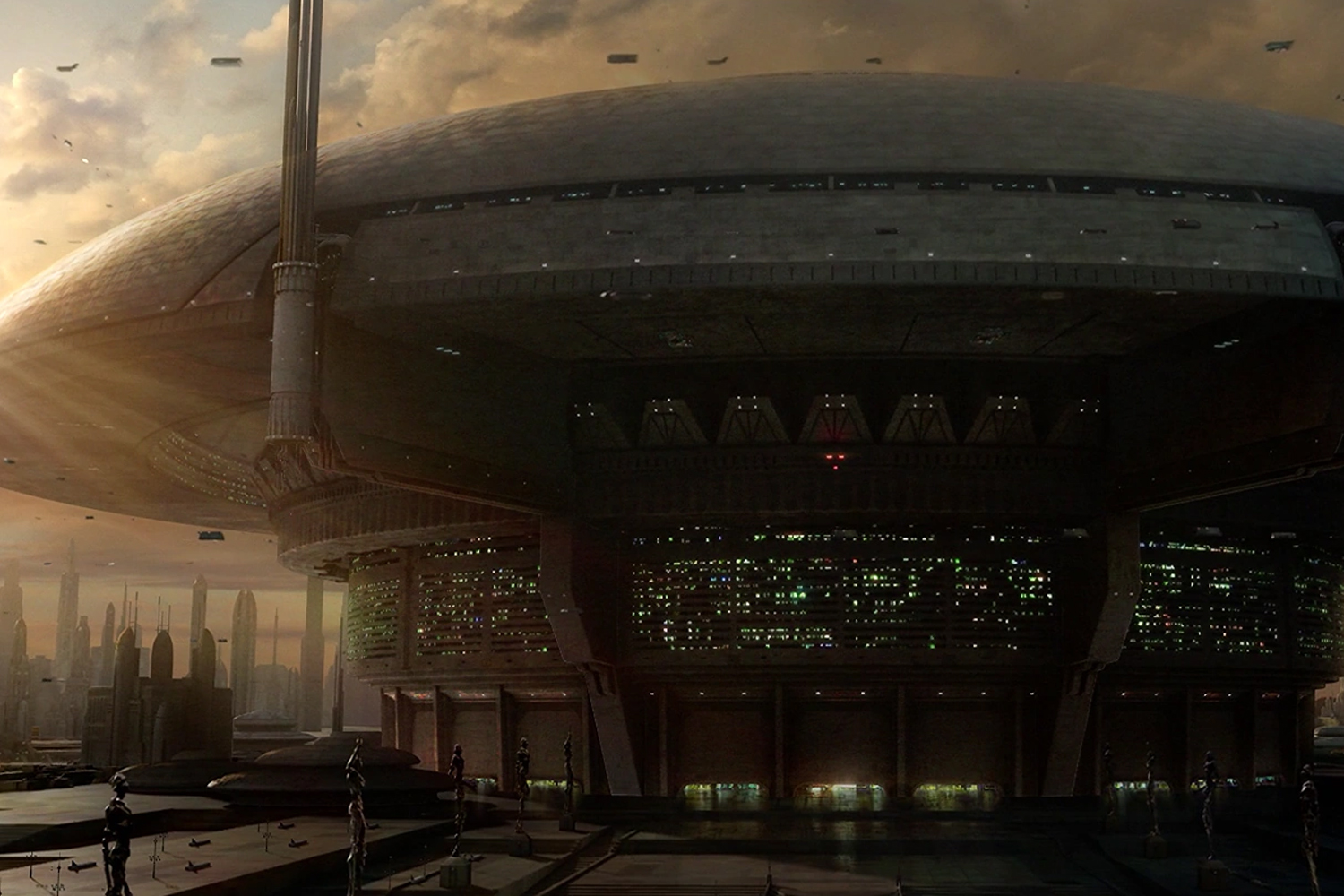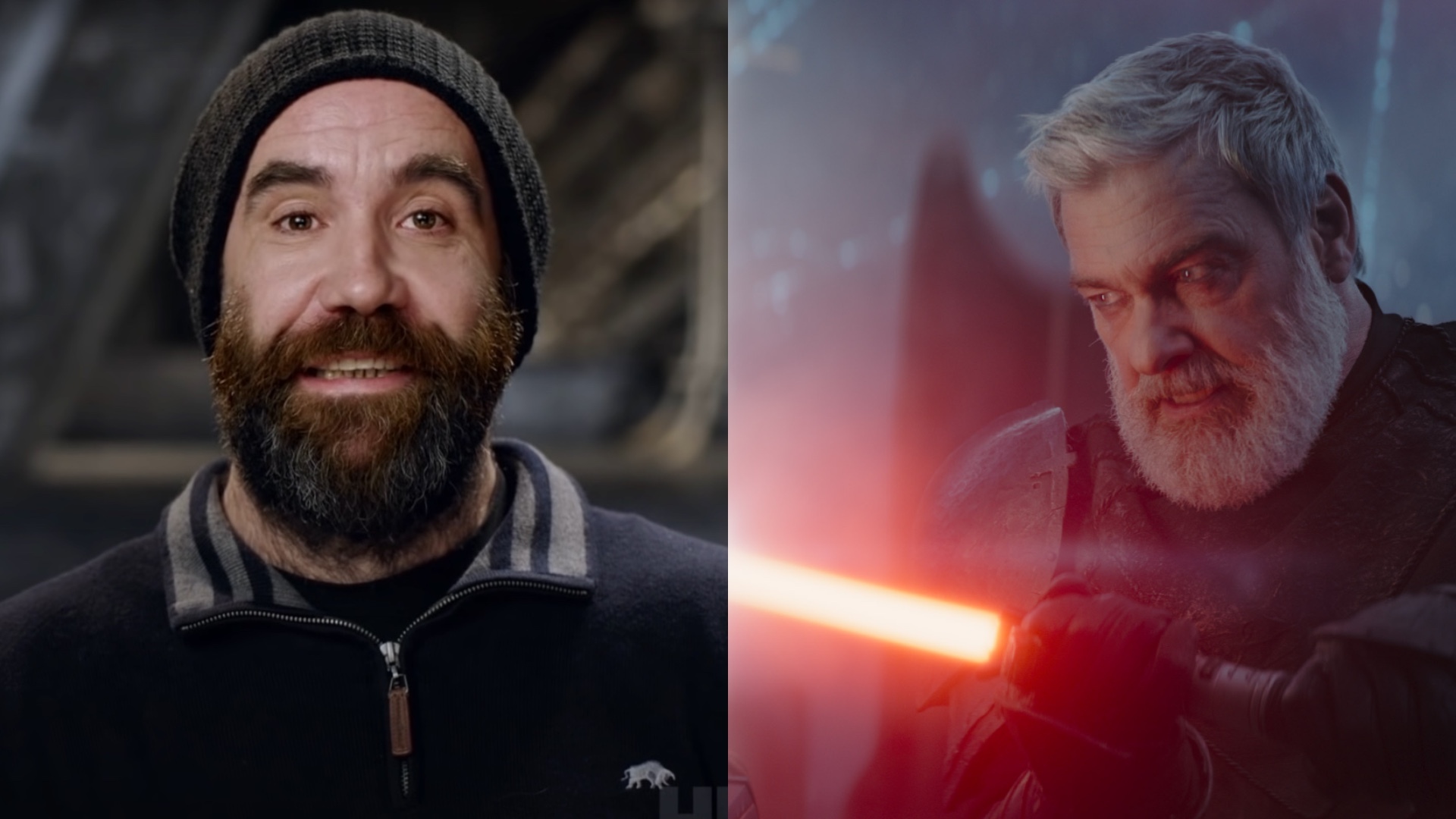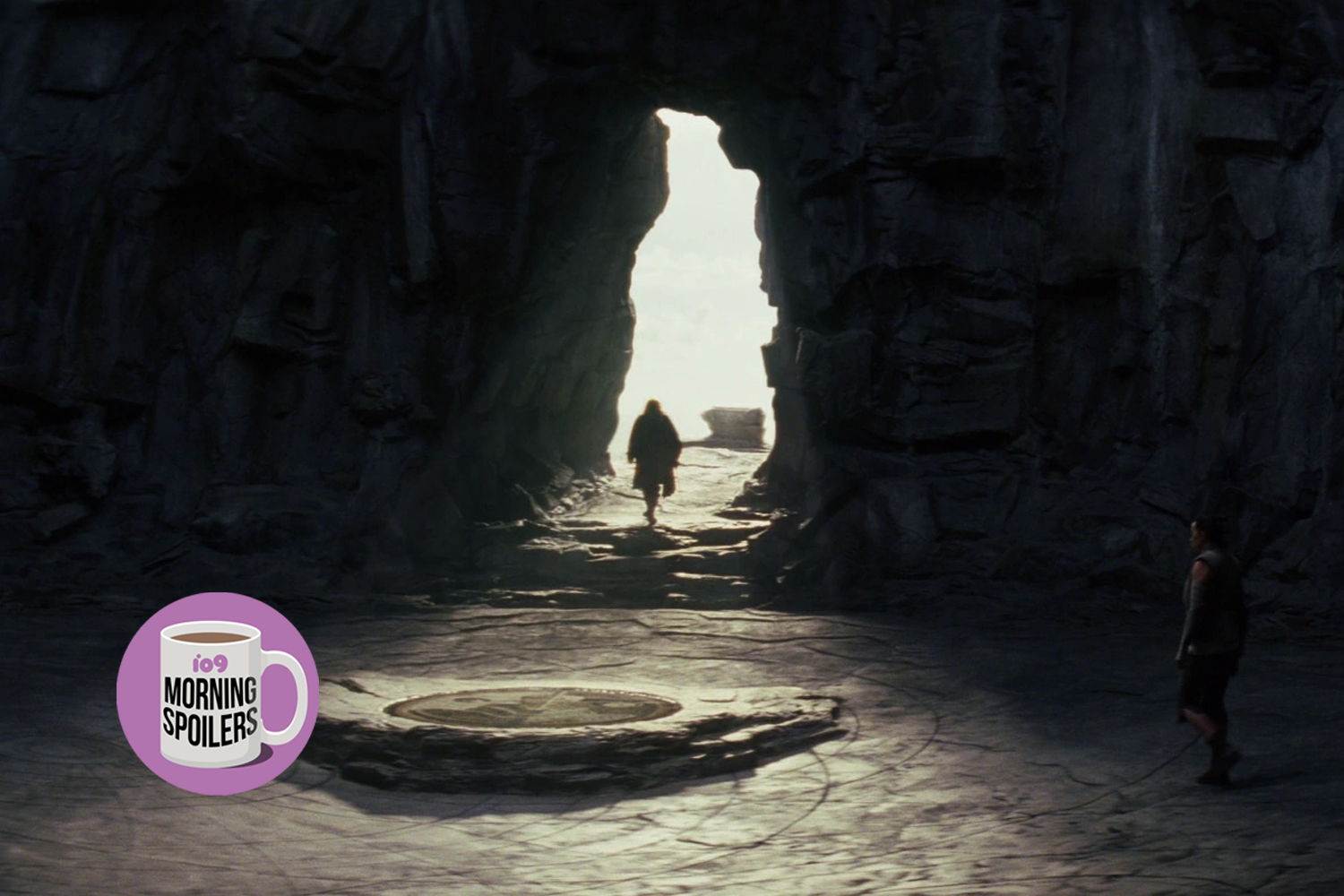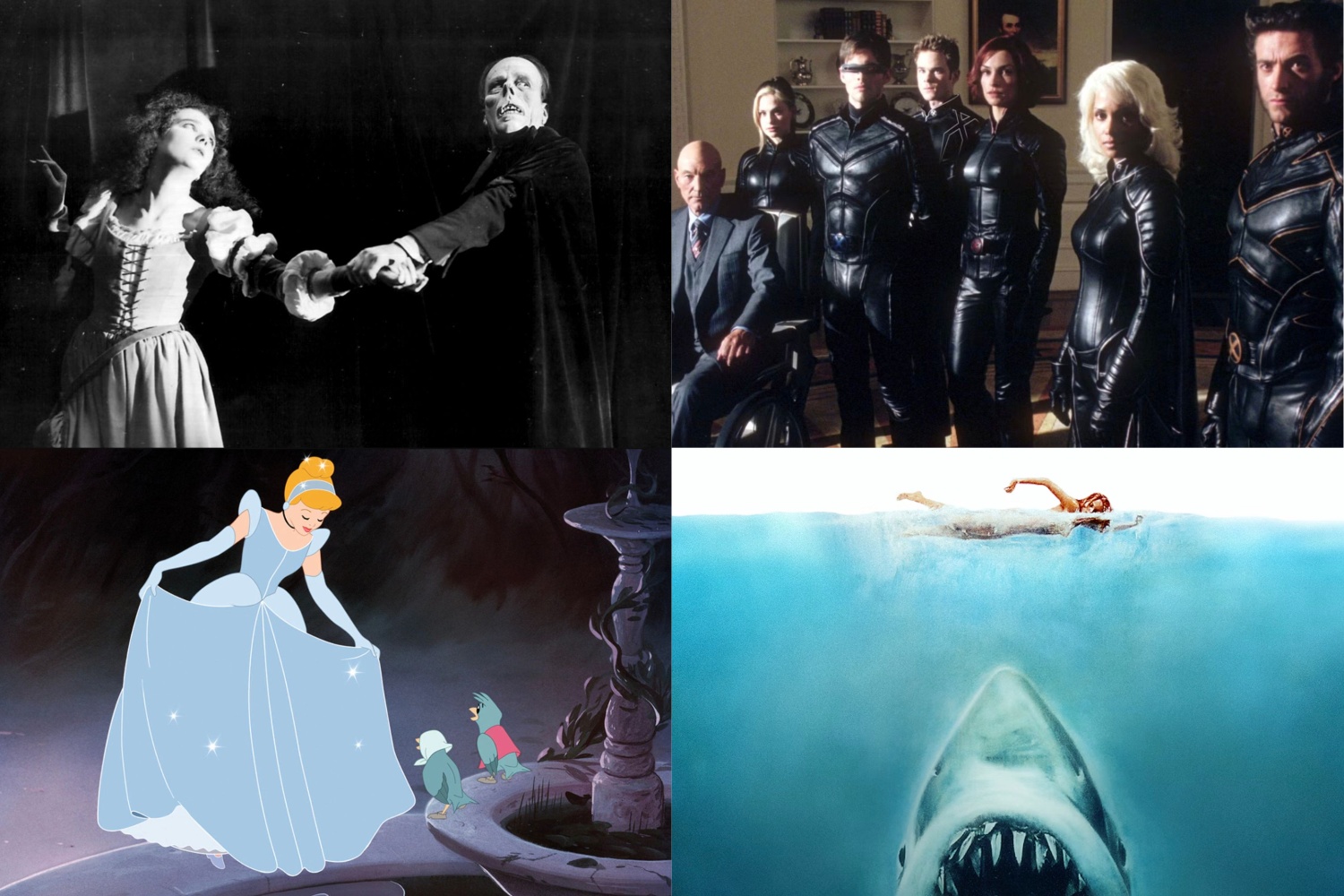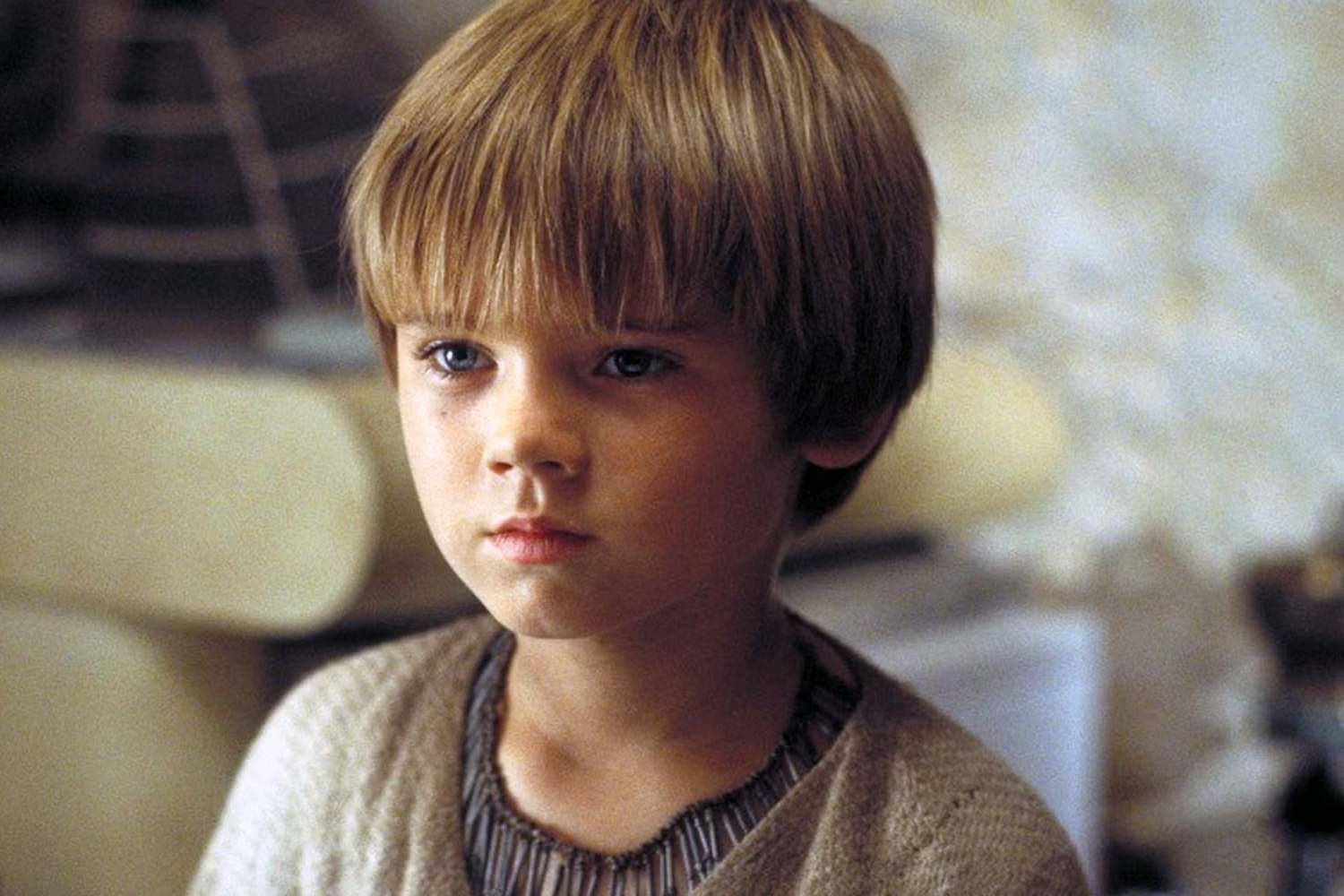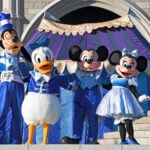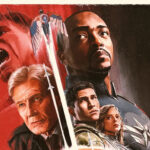When a franchise is around for four decades, it can get impossibly unwieldy to try and grasp its lore — and Star Wars canon is no exception. Here’s a guide to the origins of Star Wars Canon, the rise and fall of one of the most prominent Expanded Universes in fiction, and where the saga stands with Disney today.
Header Image Credit: Cover art for the Trade Paperback of Dark Horse’s adaptation of Splinter of the Mind’s Eye, by Duncan Fegredo
A New Hope (For Merchandising)
When Star Wars first came out, nothing much was expected of it — especially on the merchandising front, which is why the in-hindsight extremely savvy move of Lucas retaining much of the rights to merchandise for the film ultimately turned into a huge source of revenue for the creator. But as the film series exploded in popularity with the release of what would later be called A New Hope, there was very obviously no real plan for spinoff and tie-in merchandising. It eventually happened, of course, thanks to the rampant desire for more Star Wars — but it was scattershot and hectic, all standalone, separate projects — you had novelisations of the movies, audio drama adaptations, Marvel’s line of comic books, one off stories like infamous Splinter of the Mind’s Eye. Lucas didn’t really care about any sort of canon — he only cared about the movies he made, everything else was ancillary (a belief Lucas has carried ever since).
By 1991, however, that was going to change. Interest in Star Wars was waning now that Return of the Jedi had been out for 9 years — the Kenner toyline had long since wrapped up, as had Marvel’s comics and other tie-in fiction. Droids, Ewoks and the two turgid TV movies hadn’t really reignited the Star Wars spark on a mainstream level. Lucas Licensing began to plan a new approach to Star Wars fiction to avoid the relatively chaos of the 1980s: Instead of a series of one-off novels, the books would begin a new, continuous storyline in an attempt to flesh out the wider Star Wars world shortly after the events of the films – as long as it didn’t interfere with what had been established by the movies, that is. Lucasfilm approached Timothy Zahn, then known for his science fiction short stories and his work on the first Cobra trilogy and Blackcollar, to write a new trilogy of novels that would later be dubbed as ‘The Thrawn Trilogy’.
Heir To The Empire was an instant success, a New York Times best seller that catapulted Star Wars back into the minds of the mainstream. The Expanded Universe was born.
The EU Strikes Back
From that point on, the Expanded Universe expanded, rapidly. There was the rest of Zahn’s trilogy of novels, followed by more and more, covering everything from Luke’s newly founded Jedi Academy to the exploits of Wedge Antilles and the Rogue Squadron. There were Dark Horse’s comics, video games like Dark Forces featuring new characters operating in the background of the movies, huge tie-in multimedia events like Shadows of the Empire — the EU didn’t just start to flesh out what happened after the movies (Han and Leia had kids who became Jedi, Luke married the former personal dark jedi assassin of the Emperor, Chewbacca got killed by LITERALLY HAVING A MOON FALL ON HIM. Like I said, a lot of stuff happens), it started expanding backwards as well, filling in the events between the films, shortly before them, and then even far, far before them with the expansion into the ‘Old Republic’, a period of time roughly 4,000 years before Episode IV (a setting that would gain massive appeal in the mid-2000’s thanks to Bioware’s seminal RPG Star Wars: Knights of the Old Republic and its sequel, The Sith Lords). Star Wars mania was reaching a fever pitch again, even with out a movie to accompany it, although it would receive yet another jolt with the theatrical release of the Special Editions, and then The Phantom Menace in 1999. By 2000, the Expanded Universe was getting a bit hectic, despite Lucas’ own constant refrain that the movies trumped all else in terms of a canon. In order to organise the EU, Lucasfilm brought in Leeland Chee to create The Holocron, an internal database that would sift fictional elements of the Star Wars universe into several distinct categories of ordered canon:
G-Canon: The ‘George’ canon that was all six movies
T-Canon: A later addition with the release of Clone Wars that covered the official TV shows
C-Canon: ‘Continuity’ Canon, tie-in media like books and comics that connect the time periods between G and T canon properties (this is where most of the EU stood)
S-Canon: ‘Secondary’ Canon, elements from tie-in media that were considered ancillary
N-Canon: Non-canon ‘what if’ stories, like the popular Star Wars Tales comic anthology
Even though the EU was technically an ancillary, non-‘true’-canon offshoot, fans didn’t care at this point. It had gotten so expansive and comprehensive that to them, it was just as valid as the movies. The EU survived the release of a new trilogy, and was in fact bolstered by it – a whole new ‘official’ period of time in the Star Wars universe to tell stories in. The 10 years between Episode I and Attack of the Clones proved fertile ground for storytelling, as did the 3 year-long Clone Wars conflict itself, and then ultimately the 20 year ‘Rise of the Empire’ period between Revenge of the Sith and the original trilogy. Even if diehard fans brushed off the prequels, the EU was still there for their Star Wars fix – Lucas kept away from it, keeping them happy, Lucas didn’t care for it, keeping him happy.
This began to change with the creation of the Clone Wars animated series, which in Lucas’ eyes, as it was a Lucasfilm animation, was the first ‘official’ entry in the Star Wars saga since Revenge of the Sith. Fans had long had tales of Anakin, Obi-Wan and the Jedi Order’s battles during the conflict, but to Lucas none of that mattered – what happened on the show, now in the ‘T-Canon’ bracket in official canon above the tie-in media, was what really happened. At first, fans of the EU didn’t mind, but as the Clone Wars progressed, it turned to the EU for story ideas and characters, changing what was once in the eyes of many ‘true’ canon into something entirely new. Characters like Jedi Master Even Piell died in Clone Wars before they had in the comics. Others, like Asajj Ventress, took on completely new backstories. These were all relatively minor incidents, but perhaps the most controversial change came with the introduction of the Mandalorians in the show’s second season. Mandalorian society was completely altered for the series, turning them into a now peaceful civilisation who had done away with their violent ways — vastly different from the quasi-tribal, honour-bound Clone trooper trainers depicted in the then massively popular Republic Commando novels by Karen Traviss. The overriding of Traviss’ work cause a huge stink not just among fans, but with Traviss herself — she unceremoniously cut short the planned end of her Commando books and moved on.
Since then, the ‘conflict’ between what was canon and what was not in the EU largely died down — especially as fans became more accepting of Clone Wars as it got progressively better during its run. The EU was in a relatively calm place — but all that would change very soon.
Return Of The Streamline
But then came the Disney buy out. For a while after the acquisition, things remained relatively tentative in the way they were – EU media still came out, very little was yet to be known about the plans for the new trilogy of movies. But then on April the 25th, 2014, the announcement that many fans of the EU dreaded finally happened: The Star Wars Canon was being reshuffled and streamlined, and the EU was officially no more. The upcoming trilogy would be told on a blank, post-Return of the Jedi slate, the old EU now a ‘Legend’ lost to time – and Leeland Chee spearheadeda new story group to trim the fat of the Star Wars galaxy.
Suffice to say, fans freaked out and then were pretty much immediately confused. While they lamented the loss of their favourite EU stories, Disney did little to really help end the confusion, what between their own roundabout way of revealing that the ‘new’ universe had technically started months beforehand in a Star Wars Insider short story, and then by inadvertently creating a bizarre schism about the official timeline of the movie’s events with not one, but two official methods of chronicling the movies. There were a lot of unanswered questions about what exactly was going on.
Which is basically where we are right now.
The Canon Awakens
So where are we going forward? Well, it’s actually simpler to understand official Star Wars Canon now than it ever has been. When Disney and Lucasfilm announced their plans for the Star Wars universe, they revealed that from that point on, unlike how it had been in the past, every piece of Star Wars media would be canon, starting off with:
All six current movies
The Clone Wars
The Force Awakens as well as Episodes VIII, IX, and the spinoff movies
Star Wars: Rebels
The then-upcoming novel Star Wars: A New Dawn and Marvel Comics series
It’s an interesting angle to take with the Star Wars universe, where everything is ‘official’ and it’s all connecting together — it’s similar to the approach of at least the cinematic side of Disney’s other big media acquisition, Marvel Comics. But for all the appearance of being a fresh new start, and a streamlined approach to the franchise, it’s largely similar to at least what Lucas had always planned: The creations that come directly out of Lucasfilm are what matter, it’s just now that the ancillary material that was once separate is now included.
That said, it’s not exactly all as rosy or simple as you might expect. First of all, there’s the question of the still-active and ongoing presence of Star Wars: The Old Republic, the Bioware MMORPG set thousands of years before the movies in the popular Old Republic setting. As the game continued to be supported post-Disney acquisition, the question if the game (and thus the setting and previous bits of fiction connected to it) was technically now part of the approved canon still hangs over it – not even the developers really know. It’s far enough removed from the events of the films that there’d be no harm in it being so, but it sits in a relatively unique position as it lies in the limbo between the ‘Legends’ and the ‘New’ Canon.
The continued existence of ‘Legends’ itself raises just as many questions. When streamlining the canon, the old EU material didn’t completely go away. It was rebranded as ‘Legends’ content, content that, just as it had been in the past, could be mined for ideas by the official canon – as John Jackson Miller eloquently put it, the thing about legends are that some of them are true. But by being in this sort of halfway house where it can still be of use going forward (as well as the confusion of asking if new, official content can be written for the ‘Legends’-verse) it means we’re essentially left with what we had during the heyday of the EU in the first place, two separate, yet connected universes of fiction – it’s just that one has a more larger, loudly announced seal of approval stamped on it now. Only time will tell how they’ll really interact going forward, but there’s just as many questions surrounding the canon of the Star Wars saga now as there ever has been.
If I’m sure of one thing however, we’ll all continue to bicker and nitpick about it. It’s what we Star Wars fans do!
